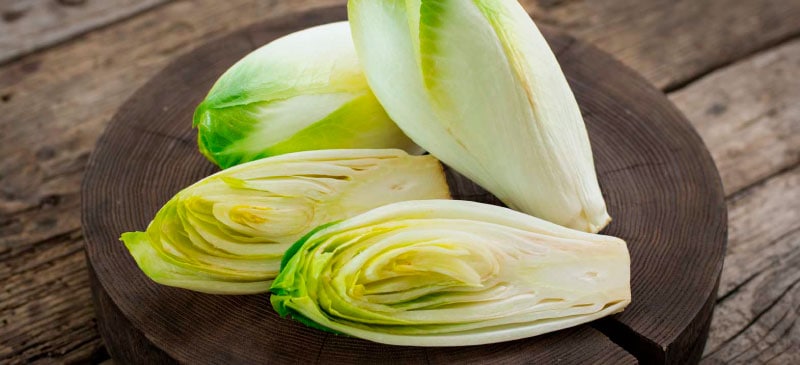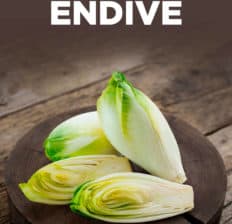This Dr. Axe content is medically reviewed or fact checked to ensure factually accurate information.
With strict editorial sourcing guidelines, we only link to academic research institutions, reputable media sites and, when research is available, medically peer-reviewed studies. Note that the numbers in parentheses (1, 2, etc.) are clickable links to these studies.
The information in our articles is NOT intended to replace a one-on-one relationship with a qualified health care professional and is not intended as medical advice.
This article is based on scientific evidence, written by experts and fact checked by our trained editorial staff. Note that the numbers in parentheses (1, 2, etc.) are clickable links to medically peer-reviewed studies.
Our team includes licensed nutritionists and dietitians, certified health education specialists, as well as certified strength and conditioning specialists, personal trainers and corrective exercise specialists. Our team aims to be not only thorough with its research, but also objective and unbiased.
The information in our articles is NOT intended to replace a one-on-one relationship with a qualified health care professional and is not intended as medical advice.
What Is Endive Good For? Top 5 Benefits of This Leafy Green
January 24, 2023

The endive is a common vegetable found at most supermarkets across the country. Unfortunately, it can be a bit intimidating, as most people are unsure know how to use it and opt for more familiar leafy greens, such as arugula, Romaine or spinach instead.
However, going out of your comfort zone and giving this flavorful veggie a try can bring a hearty dose of nutrients, flavor and versatility to your diet.
Are endive and chicory the same? What is the difference between endive and Belgian endive?
Keep reading for the answers to the most common questions about this nutritious green, plus how you can enjoy it as part of a well-rounded diet.
What Is Endive?
According to Dictionary.com, the official endive definition is “a composite plant, Cichorium endivia, having a rosette of often curly-edged leaves used in salads.” To put it simply, however, the endive plant is a leafy vegetable that belongs to the chicory root family and encompasses several unique varieties.
There are a few different types of endives available, including Cichorium endivia, Cichorium intybus and Cichorium pumilum, and this leafy green goes by a number of different names. For example, it’s often known as chicory, endive or endivias in Spanish.
What is endive called in the U.K.?
In some regions of the United Kingdom, certain varieties of this popular leafy green are also known as “frisée.”
What does endive taste like, and what is it used for?
Although the flavor can vary a bit between different types, it generally has a crisp, crunchy texture and a slightly bitter taste. It works well in salads or cooked and served as a delicious endive appetizer.
It can also be swapped in for other greens in your favorite recipes to bring an interesting taste to many different dishes.
Types
There are three main types of this vegetable available, each of which has slight differences in taste and texture. Here are the most common varieties of the endive vegetable:
- Curly endive (Cichorium endivia var. crispum): Also known as frisée or chicory, this variety has a bitter flavor and frilly, curly leaves.
- Belgian endive (Cichorium intybus var. foliosum endive): This type of endive lettuce, also sometimes called Belgium endive, features pale yellow leaves that are moderately bitter. Red endive, or radicchio, is a specific variety that has more of a reddish hue.
- Broad-leafed endive (Cichorium endivia var. latifolium): Although this form belongs to the same genus and species as curly endive, it’s slightly less bitter than the other two varieties. It’s also sometimes referred to as escarole instead of endive in certain recipes and dishes.
Keep in mind the the endive pronunciation can differ between these different varieties. The curly variety, for example, is pronounced “in-dive” while the Belgian variety is pronounced “ahn-deev” instead.
Benefits
1. Supports Digestion
This vegetable is a great source of fiber, supplying nearly one gram in each 1/2-cup serving. Getting enough fiber in your diet is absolutely essential when it comes to supporting digestive health and promoting regularity.
This is because fiber moves slowly through the gastrointestinal tract, pushing food and materials along to keep things running smoothly. Research shows that fiber could help protect against several digestive disorders as well, including constipation, hemorrhoids, stomach ulcers and diverticulitis.
2. Rich in Antioxidants
Besides supplying an array of several different vitamins and minerals in each serving, this leafy green is also loaded with antioxidants. Antioxidants are powerful compounds that help neutralize free radicals to prevent cell damage and chronic disease.
According to one in vitro study published in the Journal of Agricultural and Food Chemistry, this vegetable is rich in several antioxidants, including quercetin, kaempferol and myricetin, among others.
3. Strengthens Bone Health
The endive is a great source of vitamin K, cramming approximately 72 percent of your daily needs for this key fat-soluble vitamin into each 1/2-cup serving. Vitamin K plays a central role in bone health and bone metabolism.
It also increases levels of a specific protein that helps increase calcium levels in your bones to boost bone strength. Several studies have found that upping your intake of vitamin K could help reduce the risk of fractures and bone loss.
For instance, one study out of Toronto showed that supplementing with five grams of vitamin K1 for two to four years could help protect against fractures in postmenopausal women with osteopenia, or a weakening of the bones. Another study in the American Journal of Clinical Nutrition found that a low intake of vitamin K was linked to lower bone mineral density in women.
4. May Protect Liver Function
Although research is lacking in humans, multiple animal models have found that this leafy green can help protect and preserve liver function. For example, a 2016 animal model out of Egypt showed that endive extract reduced several markers of drug-induced liver damage in rats.
Similarly, another study in the World Journal of Gastroenterology demonstrated that the extract decreased the buildup of liver scar tissue in rats.
5. Promotes Weight Loss
This green is low in calories but brimming with nutrients, making it a great addition to any weight loss diet. It’s especially high in fiber, packing nearly a gram into a single 1/2-cup serving.
High-fiber foods help slow the absorption of sugar in the bloodstream, stabilizing blood sugar levels to curb cravings and ward off hunger. One study conducted by Brigham Young University College of Health and Human Performance showed that increasing fiber intake helped reduce the risk of weight and fat gains in women over a 20-month period.
Nutrition Facts
A quick look at the endive nutrition profile can reveal exactly why this superstar ingredient is so great for your health. Not only is it low in calories, but it’s also rich in fiber, vitamin K, vitamin A and folate.
A 1/2-cup serving of chopped, raw endive (about 25 grams) contains approximately:
- 4.3 calories
- 0.8 grams carbohydrates
- 0.3 grams protein
- 0.8 grams dietary fiber
- 57.7 micrograms vitamin K (72 percent of the DV)
- 542 international units vitamin A (11 percent of the DV)
- 35.5 micrograms folate (9 percent of the DV)
- 0.1 milligrams manganese (5 percent of the DV)
In addition to the nutrients listed above, it also contains a small amount of vitamin C, pantothenic acid and potassium.
How to Use (Recipes)
This vegetable is available at most grocery stores and can be found in produce section, usually alongside other specialty greens. If you’re having difficulty locating it in a store near you, you can also find it in many farmers markets as well.
There are plenty of options for how to incorporate this leafy green into your weekly meal rotation. One of the most popular uses is to slice it into strips and mix it into your favorite endive salad recipes.
Alternatively, you can even swap it in for other leafy greens, like spinach or arugula, for an easy endive substitute. You can also use other varieties interchangeably, although it can slightly alter the final taste and texture of your recipes.
There are several different options for cooking endive as well. Try sautéed, braised, baked or roasted endive in your favorite Belgian endive recipes.
You can also use it in place of crackers and pair with dip as a simple option for endive appetizers. Or, try adding it to ceviche, soups or stir-fries to squeeze some extra nutrients into your meal.
How do you eat endives?
There are plenty of endive recipe options out there with several different ideas for how to cook endive or even enjoy it raw. Here are a few delicious and nutritious ways to start adding this incredible ingredient to your diet:
- Radicchio Endive Salad Recipe
- Endive Chowder
- Grilled Endive Salad
- Salmon Salad Stuffed Endive Leaves
- Braised Endive
Risks and Side Effects
Although uncommon, some people have reported food allergy symptoms after eating this leafy green. If you notice any adverse side effects like hives, rashes, itching or swelling, discontinue consumption and talk to your doctor.
Additionally, it’s important to moderate your intake of this leafy green and other vitamin K foods if you’re taking Warfarin or other blood thinners. Maintaining consistent vitamin K consumption can help prevent interactions with your medications to keep them working as they’re supposed to.
Final Thoughts
- What is an endive? It is a a type of leafy vegetable that belongs to the chicory family.
- It encompasses several different varieties, including curly, Belgian and broad-leafed endives.
- What is Belgian endive, and how does it compare to the other types? Each variety has unique differences in terms of taste, texture and appearance, as well as the way that it can be used in different recipes.
- This leafy green vegetable is rich in several nutrients, like vitamin K, vitamin A, folate and fiber. It’s also been linked to many potential health benefits, including improved digestion, better bone strength, enhanced liver function and increased weight loss.
- It can also be used raw in salads or cooked and incorporated into many recipes, including soups, stir-fries and appetizers.
- It’s also easy to swap in for other greens like spinach or arugula in your favorite dishes to add a burst of nutrients, flavor and health benefits to your meals.


